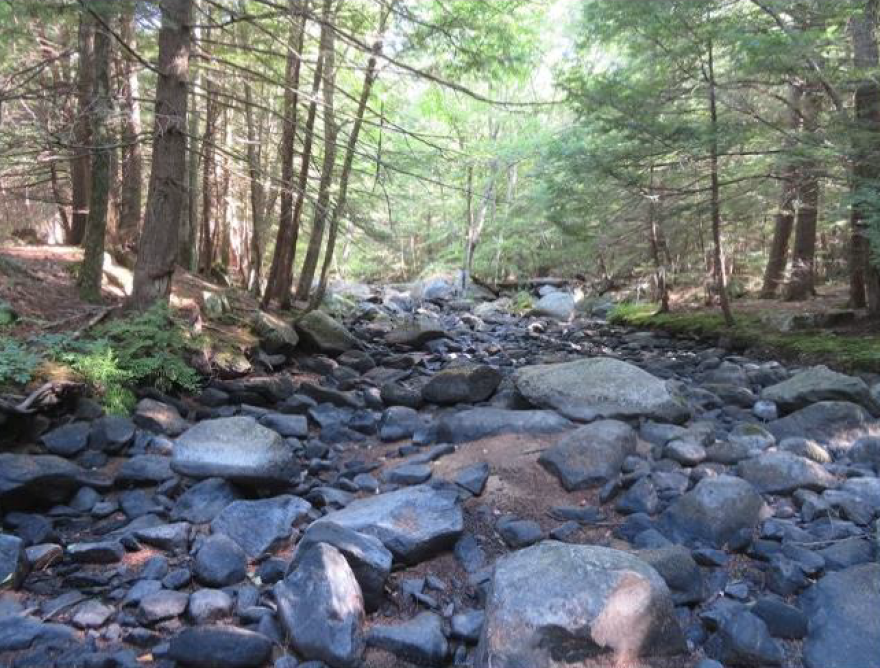New Hampshire is likely headed into an early spring drought despite recent rain and snow, according to the latest national forecast – and state officials are already warning of the potential drinking water impacts.
The state and much of the region saw a severe drought for much of last year, and state officials say key indicators, like stream levels and rainfall, never got back above average throughout the winter.
“Even with these rain events that we’ve had come through, there has not been enough rain in them to get us to where we need to be,” said state water division director Tom O’Donovan in an interview with water managers this week.
All of New Hampshire's counties are at least half a foot below average for rainfall in the past year; Rockingham County is nearly a foot lower. Precipitation this year has been nearly as low as in one of the state’s worst-ever droughts, 20 years ago.
The state’s snowpack in 2020 was one of the lowest in recent memory, state officials said, and 2021’s has only been slightly higher. With that snowpack now all but gone, earlier than normal, forecasts show abnormally dry and drought conditions are developing again in southern and western New Hampshire.
“We could see many more well failures than we did last year going into the second year of drought unless conditions change,” said Brandon Kernen, who leads the state drinking and groundwater bureau.
Officials say recent rain has helped some wells recover from the depleted levels they were left with over winter – but with the growing season about to start, they say people and ecosystems will soon begin using more water than what’s going back into the ground, and it’s likely well improvements will tail off.
Kernen said local water systems and private well users should start preparing for that possibility now. He said people should also heed local warnings against brush burning and try to curtail outdoor water use.
The state is still offering financial aid to pay for bottled water and new, deeper wells for low-income homeowners whose private wells run dry.
Program administrator Erin Holmes said the state has continued to get a few applicants a week for the program, which launched last fall with $1.5 million and has about $650,000 left.
Holmes said the fund has covered more than 70 new wells projects so far – most costing around $15,000, to convert dug wells to bedrock. She said she hopes more people who can’t afford such a replacement will reach out instead of enduring long water shortages.
“If you are making under 50 percent of the statewide average, a $15,000 bill to put in a bedrock well is not something you can even stomach. So they think they feel hopeless,” she said. “They go to their neighbors, they bring buckets of water from a river to wash their laundry, flush their toilets and things like that. And so this is relief: They have water running back in their house.”
Holmes says state officials are considering offering similar funding this year to community water systems who lose a supply well to drought.
The state is also working with the University of New Hampshire to update a 10-year-old study on extreme precipitation events. They hope to get more data on how climate change is and will be driving volatility and increasing short-term droughts in New Hampshire.
A recent federal study found that droughts raise the risk of arsenic exposure in well water. New Hampshire is already a hotspot for this problem, and state officials say more water quality testing will be key for well users going forward.








